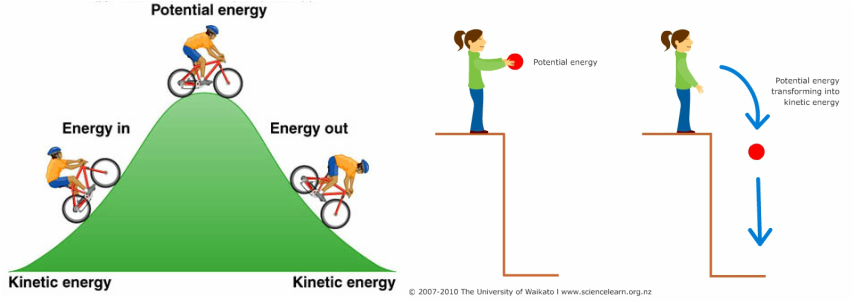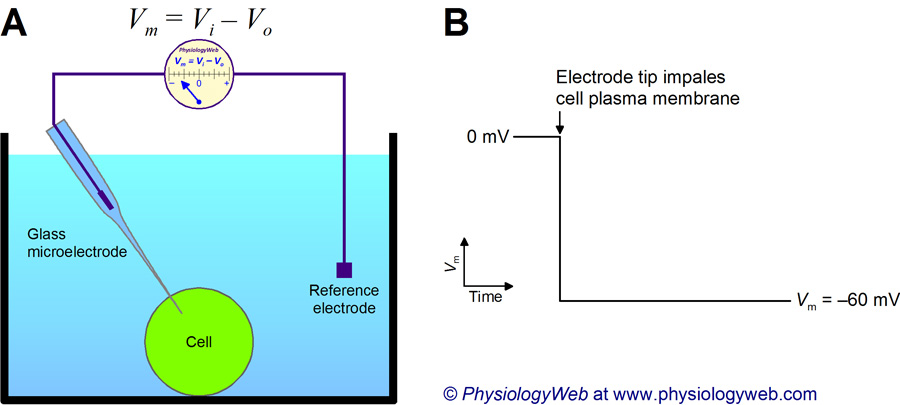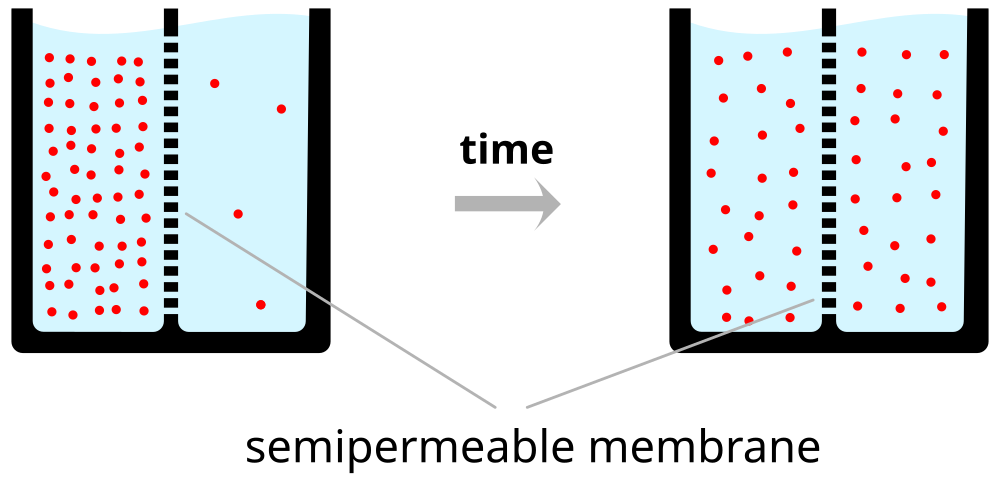- Quiz 1
- Why brains?
- The resting potential
2017-09-14 11:28:00
Today's Topics
Why brains?
Escherichia Coli (E. Coli)
- Tiny, single-celled bacterium
- Feeds on glucose
- Chemo ("taste") receptors on surface membrane
- Flagellum for movement
- Food concentration regulates duration of "move" phase
- ~4 ms for chemical signal to diffuse from anterior/posterior
Paramecium
- 300K larger than E. Coli
- Propulsion through coordinated beating of cilia
- Diffusion from head to tail ~40 s!
- Use electrical signaling instead
- Na+ channel opens (e.g., when stretched)
- Voltage-gated Ca++ channels open, Ca++ enters, triggers cilia
- Signal across cell within ms
Caenorhabditis Elegans (C. Elegans)
- ~10x larger than paramecium
- 302 neurons + 56 glial cells (out of 959)
- Swim, forage, mate
Neural communication
- Electrical
- Fast(er)
- Within neurons
- Chemical
- Diffusion slow(er)
- Within & between neurons
How are messages generated?
- Electrical potential (== voltage)
- Think of potential energy
- Voltage ~ pressure
- Energy that will be released if something changes
Potential energy
Types of neural electrical potentials
- Resting potential
- Action potential
Resting potential
- Measurement
- Electrode on inside
- Electrode on outside (reference)
- Inside - Outside = potential
Resting potential
Resting potential
- Neuron (and other cells) have potential energy
- Inside is -60-70 mV, with respect to outside
- About 1/20th typical AAA battery
- Like charges repel, opposites attract, so
- Positively charged particles pulled in
- Negatively charged particles pushed out
Where does the resting potential come from?
- Ions
- Ion channels
- Separation between charges
- A balance of forces
We are the champIONs, my friend
- Potassium, K+
- Sodium, Na+
- Chloride, Cl-
- Calcium, Ca++
- Organic anions, A-
Party On
- Annie (A-) was having a party.
- Used to date Nate (Na+), but now sees Karl (K+)
- Hired bouncers called
- "The Channels"
- Let Karl and friends in or out, keep Nate out
- Annie's friends (A-) and Karl's (K+) mostly inside
- Nate and friends (Na+) mostly outside
- Claudia (Cl-) tagging along
Party On

Ion channels
- Macromolecules that form openings in membrane
- Different types of subunits

Ion channels
- Selective
- Vary in permeability
- Types
- Passive/leak
- Voltage-gated
- Ligand-gated (chemically-gated)
- Transporters
Ion channels
Neuron at rest permeable to K+
- Passive K+ channels open
- K+ flows out
- K+ outflow creates charge separation from A-
- Charge separation creates voltage
- Voltage prevents K+ concentration from equalizing b/w inside and out
Force of diffusion
Force of diffusion
Neuron at rest
- Force of diffusion
- K+ moves from high concentration (~150 mM inside) to low (~4 mM outside)
- Movement of charged particles == current
Neuron at rest
- Electrostatic pressure
- Voltage build-up stops K+ outflow
- Voltage called "reversal potential"
- K+ positive, so reversal potential negative (w/ respect to outside)
- Reversal potential close to resting potential
Equilibrium potential and Nernst equation
Building on intuition
Back to neurons
- Na+ also has reversal potential
- Membrane at rest not very permeable to Na+
- Concentrated outside neuron (~140 mM) vs. inside (~10 mM)
- Some Na+ flows in
- Equilibrium potential is positive (with respect to outside)
Resting potential
- Net effects of ion flow across membrane
- Goldman-Hodgkin-Katz equation
Electrical circuit model
Resting potential

Summary of forces
| Ion | Concentration gradient | Electrostatic force |
|---|---|---|
| K+ | Inside >> Outside, outward | - (pulls K+ in) |
| Na+ | Outside >> Inside, inward | - (pulls Na+ in) |
Driving force and equilibrium potential
- "Driving Force" on a given ion depends on its equilibrium potential.
- Driving force larger if membrane potential far from equilibrium potential for ion.
- Equilibrium potential
- Voltage that keeps current (inside/outside) concentrations the same
- Voltage membrane potential will approach if only that ion flows
Equilibrium potentials calculated under typical conditions
| Ion | [inside] | [outside] | Voltage |
|---|---|---|---|
| K+ | ~150 mM | ~4 mM | ~ -90 mV |
| Na+ | ~10 mM | ~140 mM | ~ +55-60 mV |
| Cl- | ~10 mM | ~110 mM | - 65-80 mV |
Video summary of resting potential
Next time…
- See also https://en.wikipedia.org/wiki/Membrane_potential
- Or, what could make Annie's party go haywire?







